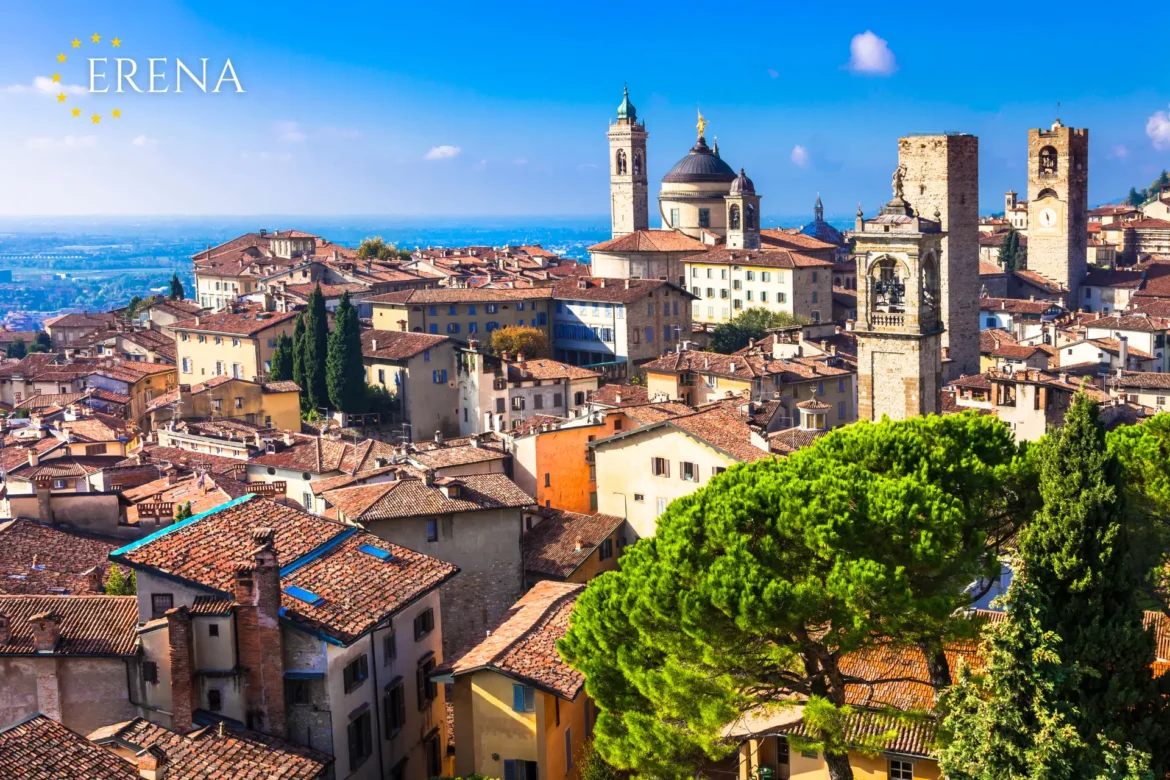Lombardy, one of the most developed regions in Italy, plays a crucial role in the country’s economy. Home to around 10 million people, the region generates over 22% of Italy’s GDP, making it a leading economic hub. With its advanced industries, financial sector, innovative projects, and cultural wealth, Lombardy has a direct impact on the real estate market. This article explores how the region’s economic success influences residential and commercial property prices.
The Economic Power of Lombardy
Lombardy leads in key industries such as manufacturing, fashion, finance, pharmaceuticals, and technology. Milan, the regional capital, is Italy’s economic powerhouse, hosting the Italian Stock Exchange, numerous international company headquarters, and thriving startups.
With high-tech clusters in Bergamo and Brescia, innovative developments in Milan, and a well-established infrastructure, the region creates numerous job opportunities and attracts professionals from across Italy and abroad. This economic growth has a direct effect on the real estate market, making it one of the most expensive and competitive in Italy.
Housing Prices: Growth and Key Factors
Property prices in Lombardy have been steadily increasing, particularly in Milan. Over the past decade, the cost per square meter in Milan has risen by more than 40%. The key factors driving this growth include:
1. High Demand
Milan attracts both local buyers and international investors due to its abundance of job opportunities, cultural activities, and prestigious status.
The housing supply, especially in central areas, remains limited, further fueling price growth.
2. Investment Appeal
Properties in Milan are often purchased as rental investments. The city’s rental market is bolstered by demand from students, professionals, and tourists.
Milan is seen as a “safe haven” for real estate investments due to the region’s stable economy.
3. Cultural and Economic Significance
Milan is not only a business hub but also a capital of fashion, art, and design. Events such as Milan Fashion Week and Salone del Mobile attract millions of visitors annually, boosting housing demand.
4. Infrastructure Projects
Improvements in the transportation network, construction of new metro lines, and suburban upgrades make the region even more attractive for living and investment.
Regional Price Variations
While Milan dominates Lombardy’s economy, other cities in the region also contribute to the real estate market and display varied pricing trends:
• Bergamo and Brescia: Industrial hubs with excellent transport connections. Property prices here are lower than in Milan but are steadily rising due to job growth.
• Como and Lecco: These cities, located near picturesque lakes, attract affluent buyers, including international investors, for their scenic beauty and prestigious locations.
• Monza: Its proximity to Milan makes Monza a popular choice for families looking for more affordable housing.
Thus, housing prices across Lombardy depend heavily on location and infrastructure development.
Commercial Real Estate
Commercial real estate in Lombardy, particularly in Milan, is a key segment of the market. Office and retail spaces in areas like Porta Nuova and CityLife set high standards for quality and innovation.
Key Trends:
1. Modern Offices
International companies prefer buildings with green certifications and state-of-the-art technologies, driving up their value.
2. Retail Growth
Milan and its surrounding areas remain hubs for retail, with major shopping centers continuing to attract consumers.
3. Warehouse Expansion
The rise of e-commerce has increased demand for warehouses near major cities.
Challenges and Issues
Despite its economic strength, Lombardy faces several challenges:
1. Housing Inaccessibility
Rising property prices in Milan make housing unaffordable for middle-class families, forcing many to move to the suburbs.
2. Aging Building Stock
Much of the residential housing outside Milan requires modernization, adding additional costs for buyers.
3. Economic Uncertainty
Inflation and changes in tax policies could affect the stability of the real estate market.
Future Prospects
Lombardy’s economic leadership continues to fuel real estate growth. Key trends expected in the coming years include:
1. Suburban Expansion
The development of transportation networks is increasing the appeal of suburban areas for living and investment.
2. Innovative Projects
New residential and commercial developments, such as the Milan Innovation District (MIND), will create further opportunities for investment.
3. Sustainable Development
Renovation of aging housing stock and the construction of eco-friendly buildings will become a priority.
As the driving force of Italy’s economy, Lombardy exerts a significant influence on the real estate market. The region’s economic growth, innovative projects, and high demand make the market dynamic and attractive for investors. However, addressing issues such as housing accessibility and the modernization of old buildings will be essential for sustainable development. Despite challenges, Lombardy continues to lead by example, setting trends not only in Italy but across Europe.
Lombardy – The Engine of Italy’s Economy: Impact on Real Estate Prices
598

